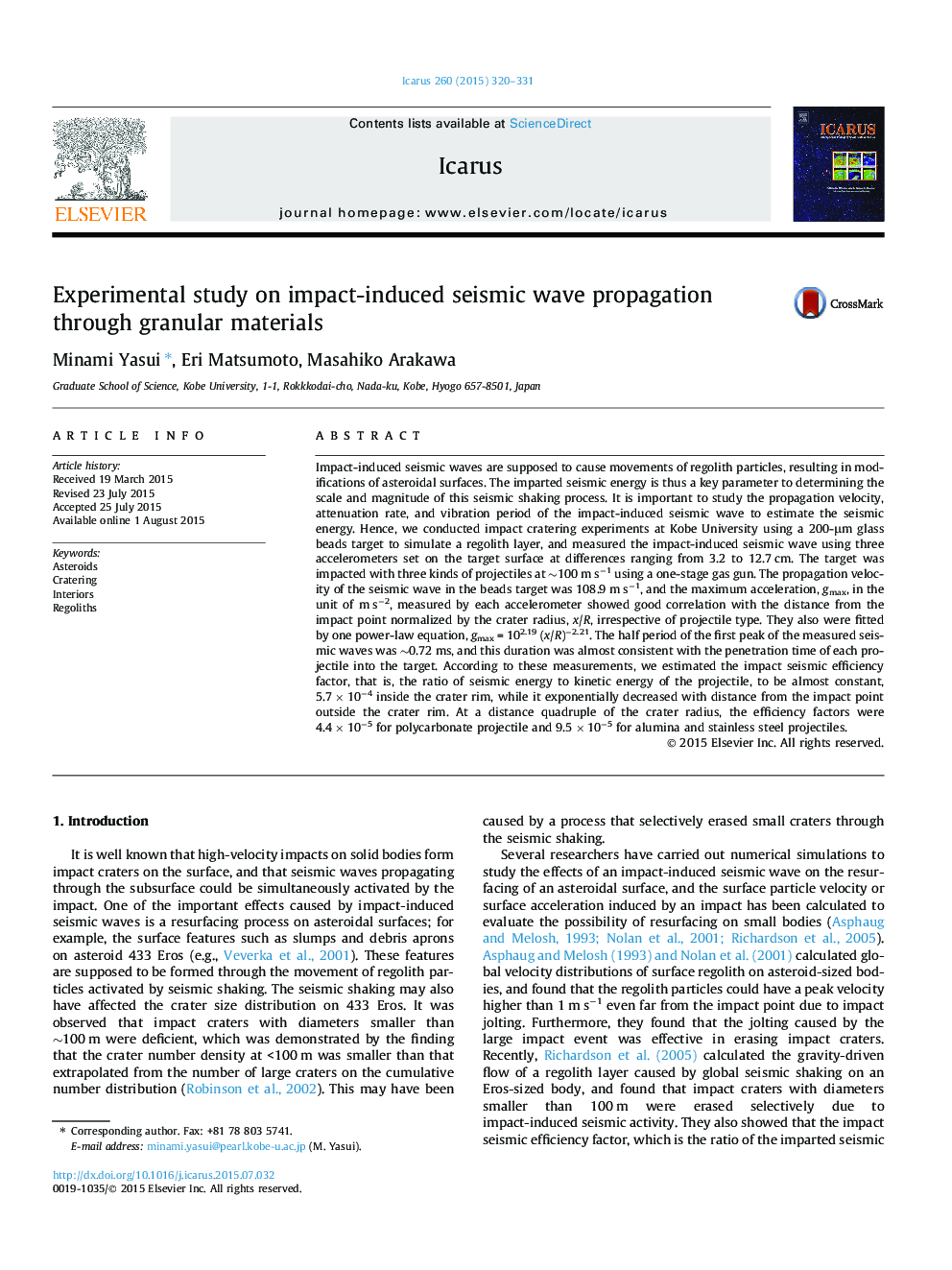| کد مقاله | کد نشریه | سال انتشار | مقاله انگلیسی | نسخه تمام متن |
|---|---|---|---|---|
| 8136083 | 1523530 | 2015 | 12 صفحه PDF | دانلود رایگان |
عنوان انگلیسی مقاله ISI
Experimental study on impact-induced seismic wave propagation through granular materials
ترجمه فارسی عنوان
مطالعه تجربی در مورد انتشار موج لرزه ای ناشی از ضربه از طریق مواد دانه ای
دانلود مقاله + سفارش ترجمه
دانلود مقاله ISI انگلیسی
رایگان برای ایرانیان
موضوعات مرتبط
مهندسی و علوم پایه
علوم زمین و سیارات
علوم فضا و نجوم
چکیده انگلیسی
Impact-induced seismic waves are supposed to cause movements of regolith particles, resulting in modifications of asteroidal surfaces. The imparted seismic energy is thus a key parameter to determining the scale and magnitude of this seismic shaking process. It is important to study the propagation velocity, attenuation rate, and vibration period of the impact-induced seismic wave to estimate the seismic energy. Hence, we conducted impact cratering experiments at Kobe University using a 200-μm glass beads target to simulate a regolith layer, and measured the impact-induced seismic wave using three accelerometers set on the target surface at differences ranging from 3.2 to 12.7 cm. The target was impacted with three kinds of projectiles at â¼100 m sâ1 using a one-stage gas gun. The propagation velocity of the seismic wave in the beads target was 108.9 m sâ1, and the maximum acceleration, gmax, in the unit of m sâ2, measured by each accelerometer showed good correlation with the distance from the impact point normalized by the crater radius, x/R, irrespective of projectile type. They also were fitted by one power-law equation, gmax = 102.19 (x/R)â2.21. The half period of the first peak of the measured seismic waves was â¼0.72 ms, and this duration was almost consistent with the penetration time of each projectile into the target. According to these measurements, we estimated the impact seismic efficiency factor, that is, the ratio of seismic energy to kinetic energy of the projectile, to be almost constant, 5.7 Ã 10â4 inside the crater rim, while it exponentially decreased with distance from the impact point outside the crater rim. At a distance quadruple of the crater radius, the efficiency factors were 4.4 Ã 10â5 for polycarbonate projectile and 9.5 Ã 10â5 for alumina and stainless steel projectiles.
ناشر
Database: Elsevier - ScienceDirect (ساینس دایرکت)
Journal: Icarus - Volume 260, 1 November 2015, Pages 320-331
Journal: Icarus - Volume 260, 1 November 2015, Pages 320-331
نویسندگان
Minami Yasui, Eri Matsumoto, Masahiko Arakawa,
